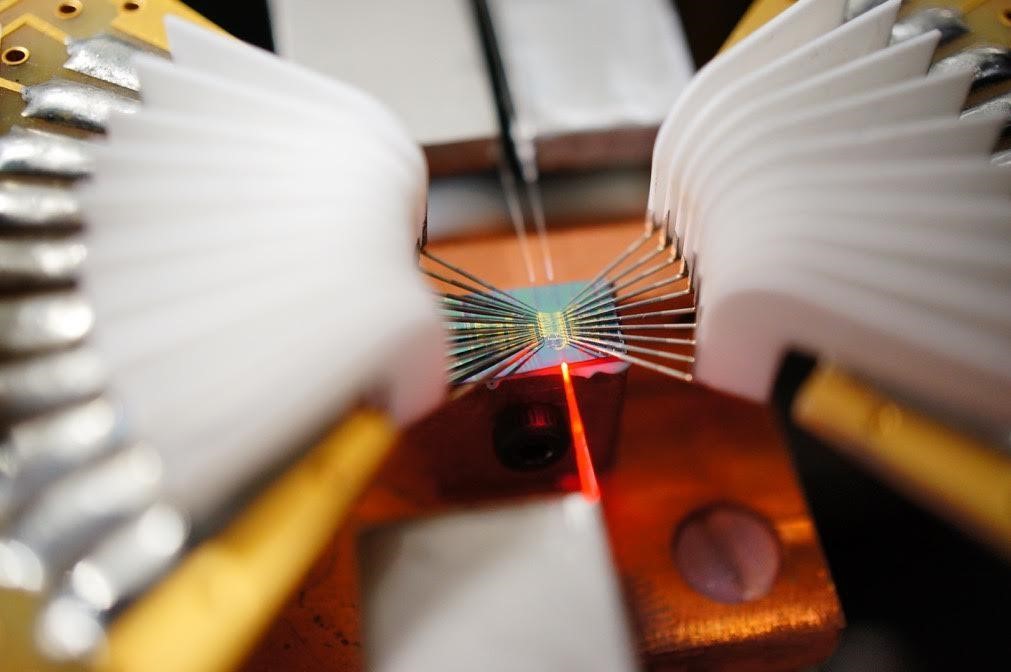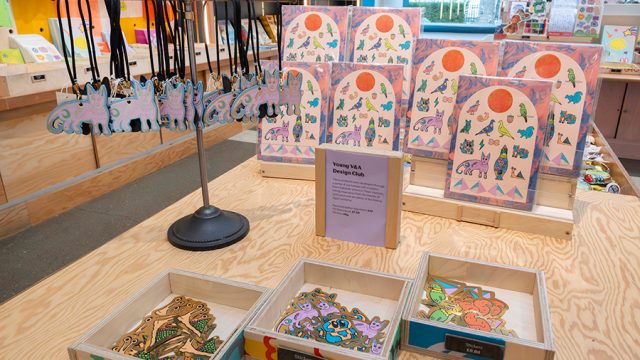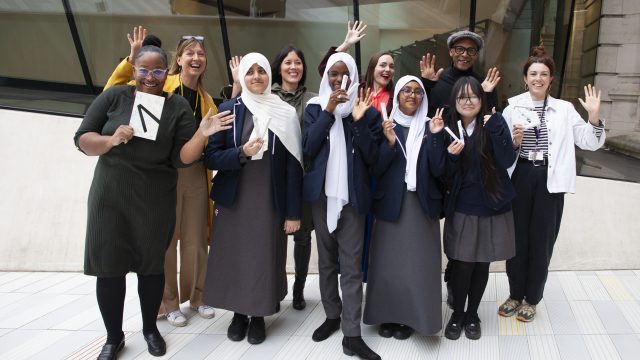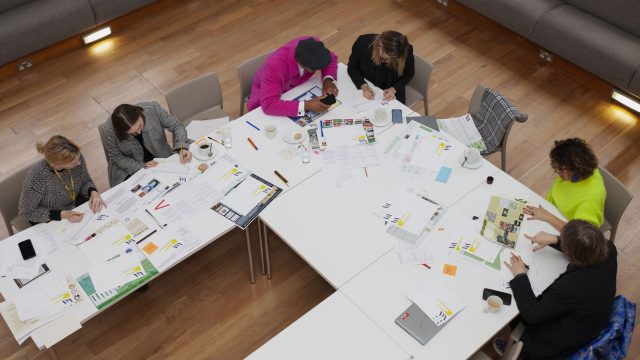‘Entangled: Art, Science and Quantum Computing’ is a two part post by our guest blogger, Dr. Libby Heaney. The Digital Programmes Learning Team and the Digital Art section of the Word & Image department have been delighted to work with her and the System Research Group.
Quantum Computer Art Collaboration
Some of you may have heard about an emerging technology called quantum computing – it has been in the news a lot recently as Google and IBM are in a space-age-style race to achieve something known as quantum supremacy. They want to build a computer that uses the bizarre rules of quantum physics to solve problems that were previously intractable such as cracking the algorithms used to secure all of our data online. Serious stuff.
I have a soft spot for quantum computing as I previously worked as a researcher in the area. Since then, I have changed course somewhat. I completed an MA at Central St Martins and now I teach on the Information Experience Design (IED) programme at the Royal College of Art. There, I have brought together my two passions by setting up the Systems Research Group to explore the creative potential of quantum physics, working either directly with technologies as in this project, or applying quantum thinking to other systems.
Around a year ago, I was inspired by a visit to the V&A’s extensive computer art collection, when I and IED students heard how the early computer artists – who were often technologists turned artists themselves – used the first digital computers to explore aesthetics and the union of art and technology. After that, I began to ask myself what type of art might be created by quantum computers, how this would be different to the early computer art and what it might mean.
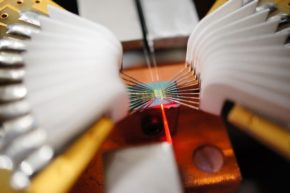
Emerging technology: Integrated Quantum Photonics Chip © Joshua Silverstone
Therefore to explore making artworks with this new kind of computer, I set up a collaboration with scientists from the Centre for Quantum Photonics at the University of Bristol who developed the world’s first reprogrammable integrated quantum computing chip, which now sits in the Science Museum across the road from the V&A. I was also interested in garnering different perspectives on what quantum computer art might be. Given the students on the Information Experience Design programme have varied backgrounds, I ran an open call for 5 groups to join me. Each group was paired with scientists from the Centre for Quantum Photonics and visited the labs regularly throughout the collaboration. The variety of approaches to this project are therefore reflected in our final pieces.
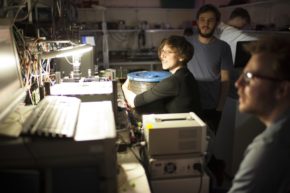
RCA student Maria Euler hugs a coil of optical fibre in the lab © Ker Siang Yeo
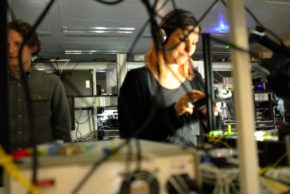
RCA tutor Dr. Libby Heaney uses contact microphones to sonify the tiny vibrations of the quantum devices in the lab © Lawrence Rosenfeld
I also continued to engage with the V&A digital art curator, Melanie Lenz and senior curator, Douglas Dodds. The collaboration started in December 2016 when the Systems Research Group re-visited the V&A computer art collection to delve deeper into the early computer art. Works by artists such as Manfred Mohr, as well as more recent works from the V&A collection such as Casey Reas’ Process 18 (software 3) and Daniel Brown’s On Growth and Form, have acted as provocations throughout the collaboration, forming benchmarks for considering if and how using quantum technologies moves us in different directions.
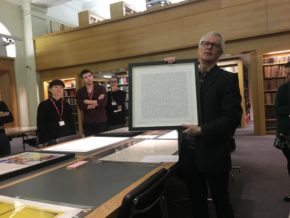
Senior curator Douglas Dodds shows us an early computer artwork by Manfred Mohr © Libby Heaney
Rather than questioning the mathematical, deterministic basis for aesthetics and creativity in a man versus machine paradigm as the early computer artists did, I am interested in quantum computing and its underlying physics as an embodiment of both the deterministic and indeterministic, and the objective and subjective. As Karen Barad points out in her texts [1], which have been influential throughout this project, quantum thinking can be used as a framework for bringing together matter and meaning, in a performative manner, moving away from dualist, subjective versus objective, standpoints.
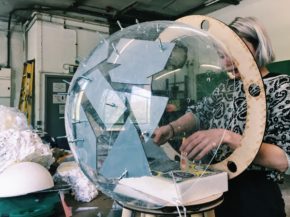
RCA student Rose Leahy constructs The Alien Present © Rob Walker and Amanda Baum
The artworks are discussed below and are subtly different to the digital artworks in the V&A collection. These differences are small, likely because quantum computers are not as developed as the digital computers were in the 1960s, but also because there are significant challenges resulting from the fundamental laws of physics when working with them. For instance, if something disturbs a quantum computation while it is running and if we try to measure what is happening to the information as it is being processed, the computation is destroyed. Imagine trying to work with a medium that deconstructs when you touch it?! When measured, the unique features that allow for fast computation disappear. However, it is these features that are the most exciting! They are known as quantum superposition – the ability for a particle to be in more than one place simultaneously – and quantum entanglement – ‘spooky’ long range correlations between seemingly unconnected particles. Our artworks explore these indirectly.
So while we cannot ‘look’ at quantum computational processes as these occur in another realm, by approaching this parallel world creatively, as Barad argues, new modes of thinking, being and seeing may be brought to the fore.
On the 11th May, the Systems Research Group presented the artworks at a special event at the V&A organised by the Digital Programmes, Learning department. Don’t take my word for it, the artworks must be experienced and will be presented at the Entangled exhibition on the 7th and 8th June 2017 at White City Place.
For further details about this and the collaboration and process see systems.rca.ac.uk
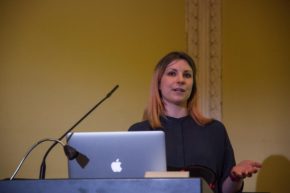
RCA tutor Dr. Libby Heaney talks about her on-going work with the RCA’s Systems Research Group at the V&A Art, Science and Quantum Computing event. © Carl Bigmore.
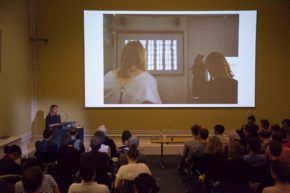
Dr. Libby Heaney introduces the collaboration and discusses challenges of making work with early stage quantum technologies. © Carl Bigmore
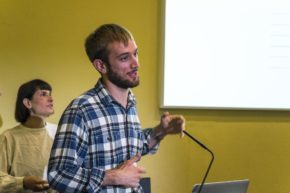
Euan Allen speaks about the science behind a quantum photonics chip. © Kevin Percival
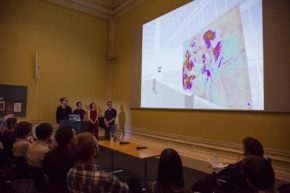
Students and Scientists talk about artwork Original Simulation © Carl Bigmore
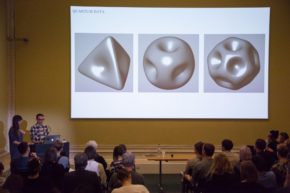
Marcela Uribe Fores and Thibaut Evrard present approximate visual representations of quantum data © Carl Bigmore
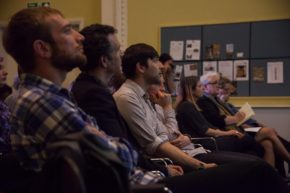
The audience
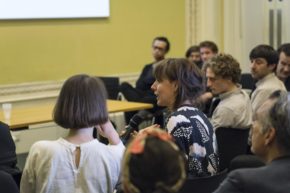
Student Anna Ridler suggests she would not have thought to make this artwork outside of this project © Kevin Percival
[1] Karen Barad, Meeting the Universe Halfway, Duke University Press, 2011.
